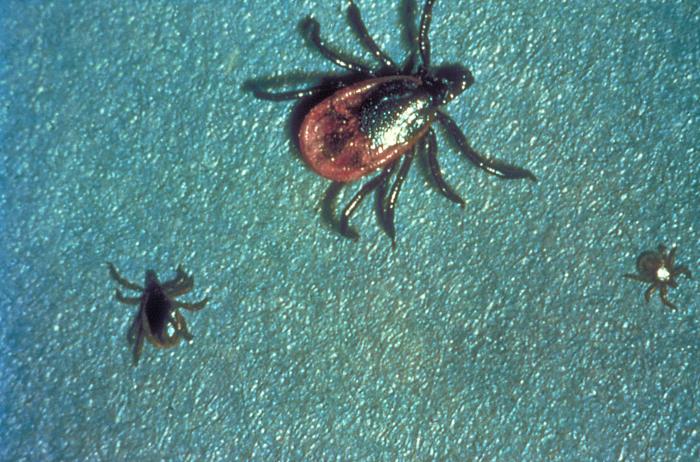By NewsDesk @infectiousdiseasenews
Health officials in Manitoba, Canada report during this Lyme Disease Awareness Month that the burden of Lyme disease and other tick-borne diseases in Manitoba continues to increase.

According to Manitoba Health, Seniors and Active Living, the 2019 season was the most active to date with 64 confirmed and probable Lyme disease cases reported. Since 2015, nearly 90 per cent of anaplasmosis and Lyme disease cases reported in Manitoba had likely local exposure. Most anaplasmosis and Lyme disease cases were exposed between May and July, and less than 40 per cent recalled a tick bite. This low recall likely reflects exposure to smaller blacklegged tick nymphs, whose activity also peaks between May and July.
This has prompted officials to advise the public that limiting exposure to potentially infected blacklegged ticks, particularly the smaller nymphs who are active during the late spring and summer months, is the key to tick-borne disease prevention. Manitobans are encouraged to take precautions to minimize their risk of tick exposure by:
• applying an appropriate tick repellent, following label directions, on exposed skin and clothing;
• inspecting themselves, children and pets after spending time outdoors;
• removing ticks as soon as possible from people and pets;
• staying to the centre of walking trails;
• wearing long pants and long-sleeved shirts; and
• keeping grass and shrubs around homes cut short to create drier environments that are less suitable for blacklegged tick survival.
Blacklegged ticks, which can carry anaplasmosis, babesiosis and Lyme disease, are most commonly found within and along the edge of forests and in areas with thick, woody shrubs and other vegetation. These ticks are typically found from early spring when snow melts through late fall.
In Canada, the number of Lyme disease cases reported by all provinces increased from 144 in 2009 to 992 in 2016 (representing an increase from 0.4 to 2.7 per 100,000 population over this time period).
In 2016, over 88% of the cases reported were from Ontario, Québec and Nova Scotia.
This annual total rose to more than 2,000 cases in 2017.
- Robert Koch: Titan of Microbiology
- Afghanistan reports 6 additional polio cases in past week
- COVID-19 testing: FDA Authorizes First Diagnostic Test Using At-Home Collection of Saliva Specimens
- COVID-19 antigen test evaluated by European scientists
- Singapore dengue: Cases rise, Officials expand release of Wolbachia-carrying Aedes aegypti mosquitoes
- COVID-19 infection: Sense of smell lost by 3rd day in most patients
- Nigeria sees COVID-19 count top 3,000
- Russia reports jump in COVID-19 infections, ‘Diagnostics have become more actively used’ according to Chief Infectionist

